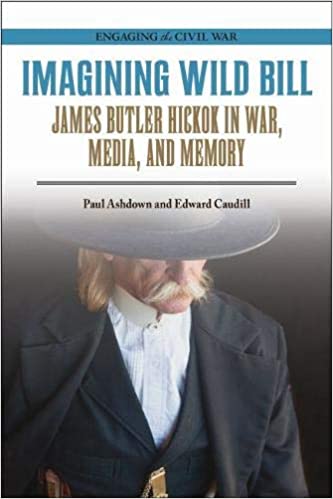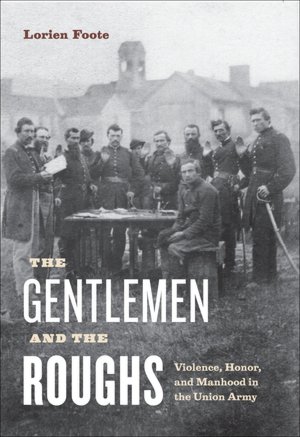Imagining Wild Bill: James Butler Hickok in War, Media, and Memory by Paul Ashdown and Edward Caudill. Southern Illinois University Press, 2020. Paper, ISBN: 978-0809337880. $26.50.
 Paul Ashdown and Edward Caudill, veteran biographers who have tackled many of the central figures of the Civil War era—including John Mosby, Nathan Bedford Forrest, Custer, and William Tecumseh Sherman—turn their gaze in this latest volume to Wild Bill Hickok, a fixture of Western dime novels, television serializations, and silver screen dramas.
Paul Ashdown and Edward Caudill, veteran biographers who have tackled many of the central figures of the Civil War era—including John Mosby, Nathan Bedford Forrest, Custer, and William Tecumseh Sherman—turn their gaze in this latest volume to Wild Bill Hickok, a fixture of Western dime novels, television serializations, and silver screen dramas.
Rather than losing themselves in the futile enterprise of separating man from myth, the authors instead endeavor to “explain how [Hickok’s] story was imagined and interpreted” by journalists, novelists, and others who helped spin Wild Bill’s yarns. In doing so, Ashdown and Caudill break with the typical mode of Western biography that has sought to demystify the tradition’s titanic figures (Donald Worster’s mammoth volumes on John Wesley Powell and John Muir serving as the prime examples). Instead, the authors follow in the footsteps of some of Western history’s most overlooked practitioners: writers like Henry Nash Smith and Richard Wade, who resisted the dusty cattle trails of the Turnerian frontier to focus instead on “polite society” and popular culture. These authors examined the agency that genteel, urban Americans exerted in crafting the nation’s Westward story. Ashdown and Caudill also draw upon the methods employed in their previous, judicious study of George Armstrong Custer’s “public memory.”
Hickok, who lived from 1837 to 1876, spent most of his life in obscurity; he became perhaps too famous for his own good in his final decade. The legends of his drinking, gambling, and gunslinging caught up with him in Deadwood, Dakota Territory, where he was killed by a man whom he had insulted in a card game. Of course, in authentic “Hickokian” fashion, even the details of his death—particularly about the assailant, Jack McCall—remain murky. Ashdown and Caudill contend that Hickok’s meteoric rise to fame was less a product of boosterism (as was the case with other Western showmen and hucksters like Wild Bill Cody) than a function of Civil War memory. His story, exaggerated though it was, placed him at the center of the Civil War era’s conflicts and obsessions.
Hickok’s life before the war brought him to the contested frontiers of sectional strife, from Illinois into Bleeding Kansas. While on the periphery of the Civil War itself, Hickok’s record afterward as a scout and U.S. Marshal brought him into the midst of the Indian Wars and “frontier justice.” Hickok’s fame cemented in a postwar nation obsessed with violence and gripped in a vigilantism that spread to touch every corner of the United States.
The authors’ conclusions bring forward some of this volume’s most valuable insights. The shifting public memory of the Civil War era in the twenty-first century has shaken the foundations of how we understand men who served in the Union armies, but whose postwar exploits occurred on frontiers awash in racial violence. Imagining Wild Bill is a well-written and accessible study of historical memory that should be welcome to popular audiences and worthy of adoption in both graduate and undergraduate courses.
Aaron David Hyams is Visiting Assistant Professor of History at Sam Houston State University.
